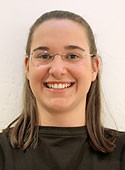In March 2005, high school juniors and seniors across the country were introduced to a restructured SAT that included a writing assessment. While students bemoaned the thought of another section to study for, the addition made perfect sense: If college students are required to write at a certain level, why not assess their capabilities before granting them admission?
The Educational Testing Service (the designer and administrator of the SAT), has taken that principle a step further by creating a test to evaluate a different, but perhaps equally important, skill set: technology literacy.
The need for a way to evaluate technology literacy continues to increase as employers and educators alike stress its importance. That demand has been met by the Information and Communication Technology Literacy Assessment currently being molded, tested and reconfigured by the EST. The test takes about 75 minutes and covers seven core skills: defining, accessing, managing, integrating, evaluating, creating and communicating information. Students are scored on a point scale of 400 to 700 on the exam.
While the ICT is not a perfect measurement and isn’t intended for use as an admissions test, it has the capacity to serve as a tool to help schools evaluate whether students possess the skills to effectively employ technology.
Assessing literacy could grow increasingly important in the near future for many UA departments. Mathematics and science departments continue to make more homework and quizzes available online and assume their students have the capabilities to access and make use of those materials. An evaluation such as the ICT could help those departments tailor curricula to meet the needs of their students.
Colleges with internal admissions processes, such as the Eller College of Management, could see a place for such a test in their student evaluations. As the competition for upper-division standing increases, an ICT-type test could also act as another tool for the college in evaluating candidates.
Veronica Diaz, learning technologies manager of the Eller College, works with others in the college to survey employers on the types of technology literacy important to them when seeking new hires. “”For better or worse, it is a general assumption that you have these skills when you graduate. We feel like we are giving our students a leg up in this area,”” she said.
The “”leg up”” Diaz referred to has several components: a mandatory Microsoft Excel certification program, an improved management information systems program that will include a hands-on lab and software training for in-demand programs such as Dreamweaver.
Though on-the-job technological training is a part of most jobs, the foundation formed in undergraduate studies can put students ahead in the rat race.
A test similar to the ICT could be used to judge the effectiveness of these programs in increasing the technology literacy of Eller College students. Such quantitative information would be helpful, as it could be used to determine the efficacy of different educational approaches. It could also be a selling point for the college, if Eller could demonstrate substantially higher technology literacy at graduation.
Regardless of whether the ICT makes it through the bureaucratic and financial jungle it will have to cross before being implemented nationally in high schools, it passes muster as a necessary and useful rubric in the information age.
Vanessa Valenzuela is a sophomore majoring in economics and international studies. She can be reached at letters@wildcat.arizona.edu.









